The polymer parylene (XY) is a reliable protective conformal film that safeguards the visual clarity and color of printed circuit boards (PCBs), similar electronic assemblies and other products.
Advantages of Parylene
The polymer parylene (XY) is a reliable protective conformal film that safeguards the visual clarity and color of printed circuit boards (PCBs), similar electronic assemblies and other products. XY optical clarity seldom diminishes to the extent either the coating or the underlying substrate becomes visually indistinct, although over-exposure to ultraviolet (UV) light may eventually interfere with optical perception. However, in the majority of cases, colorless parylene generates advantageous optical properties for a wide range of uses -- including artwork/museum artifacts, cameras/sensors, computer touchscreens, healthcare/medical devices, light-emitting diode systems (LEDs), and optoelectronic components maintaining consistent aerospace, scientific, and telecommunication operations.
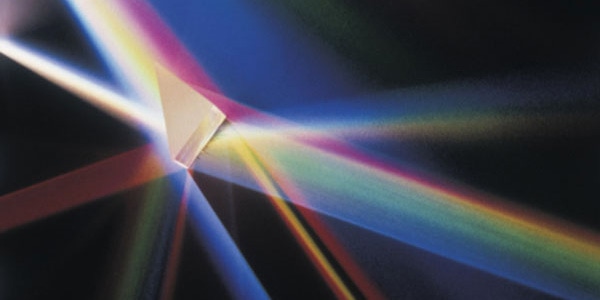
Parylene’s advantageous optical properties are partially a consequence of its application method, via chemical vapor deposition (CVD).
Numerous barrier, dielectric, and insulative benefits result, supplied by micron-thin coating layers, with a normative thickness range of 0.0005 to 0.002 inches (0.013 – 0.051 mm.). One valuable outcome is outstanding optical clarity, making parylene films very appropriate for coating lenses, photosensitive components and other devices requiring visual transparency. For instance, XY’s optical clarity maintains the visual integrity of the museum/gallery level artwork/culturally important archival items, LED performance, and medical implant receptors.
CVD for Optical Clarity
CVD can be administered to improve parylene’s optical performance, by lowering peak chamber pressure during polymer deposition. The resultant film transparency enhances optical clarity. For biomedical purposes, highly-reproducible microtextured membranes develop from the creation of multidimensional polymeric platforms during CVD. These supply enhanced optical clarity at the micron/sub-micron level, useful for investigating cell-environment relationships that can lead to better healthcare solutions.
In the process, CVD transforms whitish, powdered XY-dimer from solid-to-vapor-to-clear, colorless coating. This synthesis is a strong element in the development of parylene’s superior optical clarity. It should be noted that while
XY layer application rarely exceeds .50 mm., assuring these minor visual alterations remain mostly undetectable, for practical purposes; the coating’s dependable visual perception will be retained.
In addition, the type of parylene used for coating will impact optical clarity, according to film thickness. Parylene C, for instance, is optically clear while parylene N displays minute surface haze at thicknesses > 5 μm. Visually insignificant, these optical variances persist across XY types, as coating thickness increases, and should be registered:
The Impact of Parylene Type/Ultraviolet Light on Optical Clarity
Prolonged exposure to ultraviolet (UV) light initiates coating degradation for parylene types N, C, and D. In comparison:
Both cost significantly more than N, C, and D, at a level of 400% for F, and 1500/2000% for AF-4.
The products of degradation persist for all XY types, regardless of film thickness, after UV-absorption. Film yellowing – which can substantially significantly weaken an XY film’s optical clarity – is the major consequence. The degree of yellowing is a factor of:
In addition to diminished optical clarity, parylene coatings will finally oxidize from extended UV exposure,
Thicker films will sustain surface integrity longer, but yellowing will commence in due course, and coatings will crack.
Another potential drawback of parylene optical clarity is the very fact of their exceptional visibility also makes them susceptible to reverse engineering. That is,
This is not a condition rectified by applying thicker parylene layers, which will do little to significantly obscure the coating’s overall visual clarity. Additions to the XY conformal film are necessary -- generally as supplementary pigmented liquid epoxy or urethane coating completely covering the unit -- to prevent fraudulent component replication. Epoxy and urethane offer surface resilience comparable to parylene, masking the covered assembly while increasing removal difficulty.
Despite these moderate shortcomings, parylene conformal coatings offer excellent optical clarity in the vast majority of cases.
Parylene Effectiveness
A primary function of all conformal coatings is maintaining sufficient insulation and avoiding dielectric breakdown while protecting printed circuit boards (PCBs) and related electronic assemblies. Providing a completely homogeneous coating surface, parylene (XY) conformal coatings are exceptionally corrosion-resistant, dense and pinhole-free. Among other performance advantages, ultra-thin XY protective films offer superior dielectric properties. Dielectric substances maintain electrical insulation, simultaneously transmitting electricity without conduction. They have the potential to store energy because they support electrostatic fields that release only low levels of thermal energy.
To work effectively, a conformal coating’s breakdown voltage, defined as:
Maintaining these performance factors is necessary for ongoing PCB-operation; preventing dielectric breakdown (DB) is essential. DB results from a buildup of electrical charge within a PCB that surpasses a coating material’s dielectric strength (DS – its electrical performance limit). In such cases:
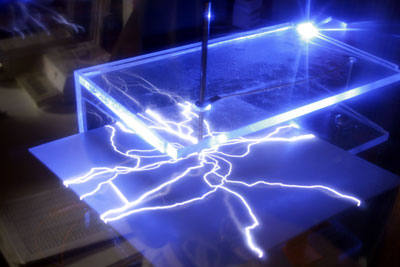
Obviously, avoiding DB is essential for effective conformal coating, requiring suitable DS. XY films generate increased dielectric strength between conductors enabling smaller, more compact PCB design
DS is a measurement of a conformal coating’s insulation effectiveness. Parylene's lower dielectric constants in comparison to liquid conformal coatings indicate its
Conformal coating materials demonstrating fewer extractible ionic impurities and greater hydrophobicity have superior DS. In terms of measurement, higher-valued ratings (7,000) indicate a particular coating material will resist dielectric breakdown better than one whose DS value is lower, (2,000). Compared to liquid coatings, parylene’s higher DS shows considerable advantage generating appropriate dielectric protection for PCBs. In addition, XY’s lower dielectric constants (DCs) represent diminished concentrations of electric flux, resisting the impact of current fluctuation within the assembly. One of parylene’s most significant advantages is the ability to withstand substantial electrical activity, maintaining its structural integrity and assembly performance. Both DS and DC values vary according to coating material, and can also vary within material type. Table 1 provides DS/DC values for parylenes N and C, and the major liquid coatings.
| Coating Type | Dielectrical strength V/ml Dielectric constant |
|---|---|
| Parylene N | 7,000 2.65 |
| Parylene C | 5,000 2.95 - 3.15 |
| Acrylic | 1,500 3.25 - 4.35 |
| Epoxy | 2,200 3.30 – 4.60 |
| Silicone | 2,000 3.10 – 4.20 |
| Urethane | 3,500 3.80 – 4.40 |
DC values exceeding 3.0, indicate inappropriate molecular response to the alternating current/field, and diminished ability to perform under conditions of electrical stress and fluctuation.
XY’s DC-ratings are better than those for liquid coatings, representing enhanced performance. The same results pertain to DS; parylene ratings are better in all cases, compared to wet conformal films, whose lower values indicate excessive thermal generation, undesirable for sustained conformal coating function.
DC readings for other parylene types range between 2.25 - 3.15. In all cases, these readings respond to alterations in Hertz (Hz) value -- a unit of change-frequency for alternating current (AC). Regarding parylene types,
Dielectric loss registers dissipation factor, for levels of internal heat within conformally coated substrates; a rating of 0.1 or less is required for longer-term maintenance of coating adhesion and performance. Coating ratings respond to alterations in Hz level. Here again, XY performs admirably:
In both cases, XY coatings exceed professional performance standards for dielectric control. As a lower DC conformal film, parylene’s weakly-bonded molecules produce dependable buffers between a PCB and its operating environment. Polarized by electrical charges, XY
To further illustrate, the wet coatings identified on Table I each register DCs larger than 3.0. Thus, the possibility of circuit-speed variance increases, a development that can interfere with the operation of any higher frequency component. In addition, DS of liquid coatings is lower, reducing their ability to maintain performance – adhesion to assembly surfaces and consistent component protection; they are more likely to break down during prolonged contact with intense electrical activity. Unlike XY films, those composed of acrylic, epoxy, silicone or urethane are prone to dielectric breakdown and current conduction, especially with the passage of time. Parylene reliably sustains an assembly’s electric field without conducting electricity, expediating the non-static transmission of electrostatic power throughout the PCB.
Protection Planning
With an increased military presence throughout the world, as well as our dependence on electronics for critical functions, it is no surprise the defense and electronicsindustries are turning to ruggedized electronics.
While many electronics claim to be “Tough” or “Rugged”, there is really only one spec that matters, MIL-STD-810F. The MIL-STD-810F spec has methods for testing a device so that it functions under low pressure/high altitude situations, in high temperatures or low temperatures, in rain or humidity, with shock, gunfire vibration, acceleration, in the presence of salt fog or fungus -- and more.
How Conformal Coatings Help Ruggedize Electronics
Conformal coating is a protective non conductive dielectric layer that is applied onto the printed circuit board assembly to protect the electronic assembly from damage due to contamination, salt spray, moisture, fungus, dust and corrosion caused by harsh or extreme environments.
Depending on the type of environment the product is intended for, the conformal coating choices can vary. Acrylics, urethanes, silicones, and parylene all have their own special uses and we have experience applying these mediums to help ruggedize products.
For circuit boards that are not conformal coated, extreme environmental conditions could cause corrosion, mold growth and current leakage, resulting in board failure. Taking extra precautions to ensure that the board circuitry can endure harsh conditions is paramount in designing and building rugged computing systems that will last through the life of the product.
Key Principles
Sensors measure specific aspects of data-driven technology. Included are such performance properties as acceleration, fluidity, humidity/temperature, position, pressure or vibration. Sensors collect data and respond with feedback for a multitude of electronic devices utilizing printed circuit boards (PCBs) and related sensitive electronics. They have been successfully adapted for use across a wide range of applications, including aerospace/military, appliance, automotive, communications, consumer, industrial, medical and transportation uses.
PCBs and the larger devices they power often need to function in harsh operating environments. Conformal coatings -- liquid acrylic, epoxy, silicone and urethane resins, and chemical vapor-deposited (CVD) parylene – provide PCBs and similar electronics excellent barrier, dielectric and insulative protection through most performance conditions, sustaining their expected utility. Substrate adhesion is necessary to conformal film reliability; coatings do not work if they delaminate or otherwise disengage from the components they are applied to protect.
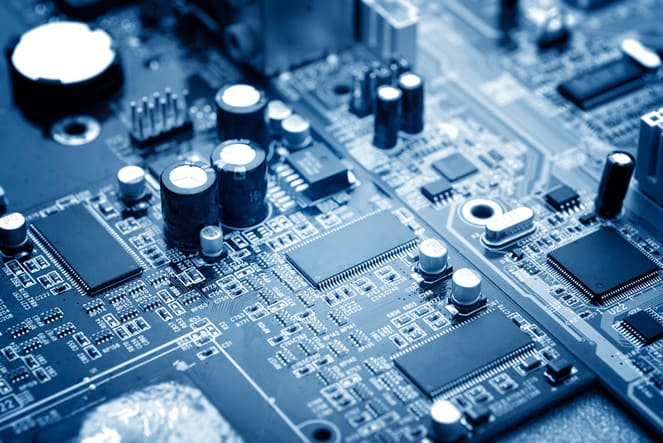
Cases emerge where typical application methods cannot guarantee appropriate film adhesion. Surface adhesion promoters – carbonyl or hydroxyl for liquid coatings, silane for parylene – improve the bond between coating materials and substrates. In this respect, evidence shows:
For instance, γ-MPS (γ-methacryloxypropyl trimethoxysilane), a silane coupling agent, promotes adhesion of photolithographically patterned polymer hydrogels to conductometric sensors. Situated on oxidized silicon wafers, sensors subjected to peel-tests of adhesion after immersion in solutions of buffered potassium chloride, with differing pH, as well temperature-changes analysis, showed varied results:
Conformal film’s adhesion is affected by pH sensitivity. Coating failure frequently causes sensor dysfunction. Evidence suggests siloxane bonds between the polymer and the substrate reformed, offering the possibility of sensor regeneration through vacuum oven curing. Additionally, higher-level bonded-energy keeps siloxane bonds from breaking at temperatures of 200°C, while providing additional chemical stability and weatherability. Maintenance of the siloxane bond can promote ongoing film adhesion and prevent sensor failure.
Other evidence exists. Microelectromechanical (MEM) surface acoustic wave (SAW) sensors use modulations of surface acoustic waves to sense multiple physical phenomena within a device’s operating environment. These include force, humidity, mass, pressure, strain and temperature. Water barrier studies of SAW sensors show that introduction of promotion materials improves film adhesion through formation of a chemical- or acid-base type bond for conformal films frequently adapted for MEMS’ uses. Conformal film adhesion promotion lessens the impact of sensor failure mechanisms.
Silane adhesion promoters form unique chemical bond with substrate surface, sufficient to improve conformal coating’s mechanical adhesion. Yet, silane is not effective for all materials or sensor uses. Adhesion promotion options to consider include:
Adhesion failure between conformal film and the substrate is a primary cause of sensor malfunction. As always, much depends upon the sensor’s specific application, its material structure and operating environment. Establishing conformal film adherence solutions for sensors should be an important topic of research in years to come.
Safeguarding PCBs
Conformal coatings primary purpose is protecting the performance of highly sophisticated electronics such as printed circuit boards (PCBs), sustaining their functionality through often unfriendly operating conditions. Among the most important coating-requirement is safeguarding PCBs from the negative impact of moisture incursion. Sources are many. Liquidized obstacles to appropriate assembly function can result from unwanted contact with acid rain, aggressive solvents, atmosphere pollutants, chemicals, fog, high humidity, intermittent immersion, persistent rain, snow, salt water/mist and wet sprays of any kind.
Within a PCB, excess moisture disrupts thermo-mechanical properties, causing development of:
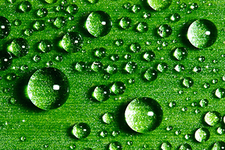
Moisture-originated performance issues can be effectively regulated by applying conformal coating to act as a buffer between the device’s components and its operating environment.
Vacuum-deposited parylene (poly-p-xylylene/XY) coatings offer many protective benefits for electronic devices. XY deposits uniformly and pinhole-free, hydrophobically, with a low dielectric constant and excellent biocompatibility. Parylene permeation barriers assure the water vapor transmission rate (WVTR) affecting an assembly is minimal, prohibiting moisture from passing through its protective film to underlying components.
As a measure, WTVR provides
Lower numerical values represent better WTVR. Compared to liquid coatings – acrylic, epoxy, silicone and urethane -- parylene WTVR values are the lowest, representing superior moisture barrier provision. XY adheres to the widest range of substrate substances/surface geometries, creating moisture barriers throughout the assembly.
Of all XY types, Parylene C has the best water vapor barrier properties. The WVTR of 5 types of XY compared to 3 liquid coatings is provided in Table 1: WVTR Barrier Properties of Parylene and Liquid Conformal Coatings
| Polymer | WVTR (g·mm)/(m2·day) |
|---|---|
| Parylene C | 0.08 |
| Parylene D | 0.09 |
| Parylene AF-4 | 0.22 |
| Parylene F (VT-4) | 0.28 |
| Parylene N | 0.59 |
| Silicone (SR) | 0.89 |
| Polyurethane (UR) | 0.93 |
| Epoxy (ER) | Epoxy (ER) |
All parylene types out-perform liquid coatings as moisture barriers, as measured by WVTR; types C and D offer lowest WVTR-levels.
Numerous studies have verified XY’s ability to provide ongoing protection from moisture incursion.Moisture presence within the PCB alters its thermo-mechanical properties, and ability to function as designed. Successful in the nanometer range, XY-coatings resist chemicals/corrosives/moisture/solvents, with minimal thermal expansion, maintaining PCB function/performance through most operational conditions. According to IPC-CC-830B, parylene qualifies for Class B specification as a hydrolytically-stable conformal coating, suitable for use in operating environments requiring higher levels of moisture insulation resistance and humidity-aging testing. Reliable parylene permeation barriers prevent moisture from passing through to underlying components, minimizing WVTR. XY’s superior moisture barrier management is further apparent with bio-implantable medical devices, where parylene conformal films withstand the presence of internal sources of moisture within the body more effectively than liquid coatings.
Why Parylene?
Since its discovery in the 1940s, Parylene has skyrocketed to prominence as an ideal conformal coating choice for a range of applications. Given its unique blend of properties, it might seem like an unparalleled conformal coating option. In many ways, it is. Here are five key properties of Parylene that differentiate it from the rest.
Electrical Properties
Parylene possesses exceptional electrical properties, notably its low dielectric constant and high dielectric strength. These attributes establish Parylene as a desirable coating candidate for an array of applications across multiple industries. Of course, Parylene has long been used in the electronics sector as a coating for printed circuit boards (PCBs), in particular. The use of parylene to coat PCBs serves to protect the board from electrical interference while allowing the design of smaller, more compact boards. Furthermore, parylene’s status as a dielectric make it an attractive option for medical implants because it forms an electrical barrier between the device’s electronics and the electrical signals produced in the body. Although parylene is inherently equipped with high dielectric strength, designers can increase dielectric strength, if necessary, by applying a thicker coat of parylene to the substrate. Other considerations may arise in such cases, however.
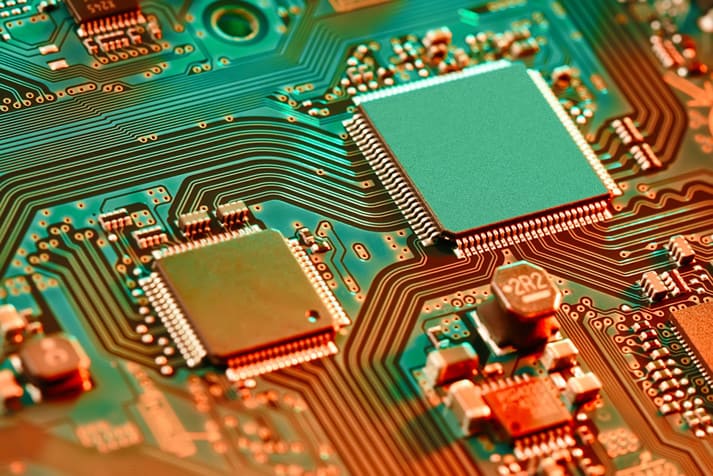
Broad Temperature Stability
Another one of parylene’s unique properties is its ability to withstand temperature extremes. Demonstrating thermal endurance, Parylene C can reliably perform in air for 10 years at 80 degrees Celsius without significant loss of physical properties. In a vacuum, however, Parylene can perform in temperatures in excess of 200 degrees Celsius.
Parylene handles cold temperatures, too. Even at -165 degrees Celsius, the coating can be folded in half and back six times before cracking. Heating the coating from two degrees above absolute zero to room temperature won’t affect it; the coating will be just as strong from both a physical and dielectric standard as it was previously.
Chemical Resistance
Another one of parylene’s many great properties is its high degree of chemical resistance. At room temperature, for instance, parylene demonstrates excellent chemical resistance to acids, bases, and solvents. In fact, it can’t be dissolved in organic solvents up to 150 degrees Celsius.
Parylene also withstands more common chemicals. As per military specifications, it can withstand a 100 hour salt spray test without affecting performance, for example. It also is chemically inert, thereby relatively unaffected by acidic or alkaline elements. These particular properties make parylene well suited for use in medical implants, which are placed inside the human body.
Biocompatibility
Chief among parylene’s desirable characteristics is its biocompatibility. Compliant with USP Class VI biocompatibility requirements, parylene is a viable and proven coating option for a range of medical device applications. Consequently, engineers can leverage the manifold benefits of the conformal coating to enhance life-critical and life-saving products. Medical implants such as stents, for example, reap the additional benefits of parylene’s dry-film lubricity, which facilitates implant placement, and its use as a drug-delivery vehicle. Parylene is also suitable for use in a range of applications that span catheters, needles, electrosurgical tools, medical electronics, and cardiac-assist devices.
Uniformity
Parylene stands out from the pack owing to the degree of conformability, uniform nature, and pinhole-free appearance. Circumventing the need for an intermediate liquid stage, the vapor deposition process by which Parylene is applied prevents voids and ensures that all exposed substrates are effectively and uniformly coated. As a result, the process is ideal for coating complex geometries and topographies that may be exposed to harsh environments.
These are just five of the many properties, characteristics, and benefits that have established parylene as the gold standard of conformal coatings. It is leveraged by markets and groups that span the medical device industry, electronics industry, Department of Defense, and NASA, and has provided valuable protection to applications ranging from life-saving medical implants to PCBs on satellites orbiting the Earth.
If you're looking for parylene coating services for printed circuit boards, contact Diamond-MT today. Get started by calling us at 814-535-3505 or completing a quote request.